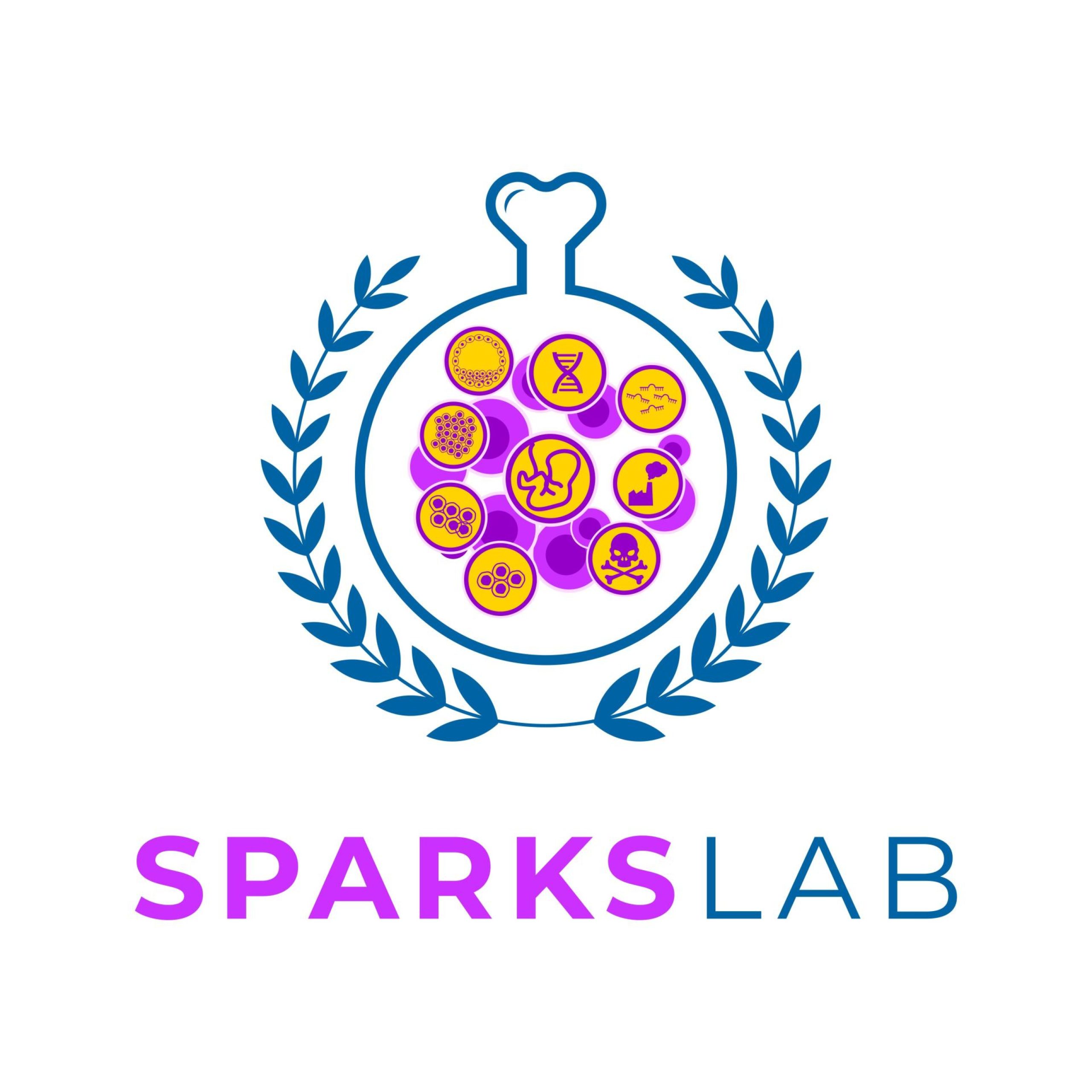At the Sparks lab, our primary focus is on unraveling the Adverse Outcome Pathway linked to skeletal birth defects resulting from prenatal exposure to environmental toxicants. We place a special emphasis on investigating the intricate mechanisms of toxicant-mediated epigenetic regulation and osteoblast differentiation.
At the heart of our research is the utilization of a pluripotent stem cell model for osteogenesis. Through the differentiation of embryonic stem cells (ESCs), we can mimic embryogenesis, allowing us to delve into the developmental bone toxicity of environmental toxicants. Our lab has established protocols to differentiate human embryonic stem cells (hESCs) into osteoblasts and employs characterization techniques to study the effect of toxicant exposures on osteogenesis. Our focus extends to investigating whether environmental toxicants hinder the osteogenic differentiation of hESCs by influencing miRNA regulation, making our ESC model a powerful tool for unraveling these intricate processes.


Current Research
As previously mentioned human stem cell cultures are used for evaluation of the mechanisms of important embryotoxicants/teratogens such as tobacco, air pollution, phthalates, bisphenol-A (BPA), and flame retardants.
Toxicant-disrupted miRNA regulation skews osteoblastogenesis
The lab will focus on determining how expression changes to epigenetic modulators mediate skeletal developmental toxicity. There are few published reports regarding the relationship between changes in miRNA expression and unwanted defects of bone development, and a lack of information demonstrating toxicant-mediated dysregulation of miRNAs associated with human skeletal birth defects.
Goal
The goal of this project is to define the in vitro and in vivo morphological changes to osteoblast development when miRNAs are modified due to toxicant exposure.
Impact
We aim to determine that candidate miRNAs are crucial for osteogenic differentiation and are targets of chemical attack decreasing osteogenic output. This knowledge will be impactful in providing insights into the development and prevention of skeletal disorders. In addition, this research will miRNAs that can serve as biomarkers for developmental bone toxicity. Overall, we can assign a mechanism of miRNA regulation in the development of skeletal defects.

MiRNA toxicant sensitivity. A) Total number of miRNAs dysregulated. B) Heatmap of eleven miRNAs altered across all toxicants. C) miRNA gene ontology of the ten downregulated miRNAs. D) Identified differentially expressed miRNAs (DEMs) and genes (DEGs) for each toxicant. MirNet 2.0 was used to identify miRNA target genes and connect the DEMs to its DEGs. Consistent connections are where the miRNA is up and its target down (or vice versa), narrowing down the miRNA-mRNA connection list. When the miRNA and its target have the same expression pattern, the connection is labeled as a parallel connection. E) Venn diagram of overlapping consistent connections with (top) and without (bottom) H2O2. F) GO biological processes of miRNA consistent connection target genes. Top 25 gene ontology miRNA consistent connection target genes without H2O2. Neural crest toxicants: Cyclopamine (CYCLO), Methoxyacetic acid (MAA), Ogremorphin (OGM), Triadimenol (MENOL); Mesoderm toxicants: Cyclophosphamide (CPA), Methotrexate (MTX), Valproic acid (VPA); General toxicants: 5-Fluorouracil (5FU), Hydrogen Peroxide (H2O2)
Developmental bone toxicity of air pollution
Air pollution exposure during embryonic development is one of the strong risk factors for developing a congenital abnormality. Investigation on air pollution exposure during pregnancy has revealed an occurrence of premature births, low birth weight, stillbirth, and heart and neural tube defects. An understudied, yet important abnormality caused by maternal air pollution exposure is the improper development of the embryonic skeleton, which can result in long-term burdens on the affected child and their family. It remains to be determined what specific stage of development air pollution disrupts (neural crest vs. mesoderm, mesenchymal, or osteogenesis) and thereby leads to an adverse bone outcome. Due to the lack of knowledge on the potential developmental toxicity of air pollution, there is a crucial need to investigate the molecular mechanisms of bone differentiation inhibition. Understanding the impact of air pollution exposure will identify mechanisms involved in skeletal malformations and inform pregnant persons of possible adverse outcomes.

Goal
This project will determine the effects of air pollution on skeletal development using human stem cell models. Further, we hope to increase knowledge of the underlying mechanisms of air pollution-mediated transcriptional regulation and osteoblast differentiation.
Determine the potential of air pollution to cause developmental toxicity during osteogenesis.
Uncover if air pollution causes developmental toxicity through increased oxidative stress.
Identify the air pollution-sensitive transcriptional messages that are necessary for osteogenesis.
Impact
The significance of this research is to contribute scientific knowledge on how exposure to air pollution can modify regulatory mechanisms that result in inappropriate cell patterning during bone development using human pluripotent stem cells (hPSCs). This research will demonstrate the suitability of human-based in vitro models to rapidly deliver high-quality human health effects information about pollutants.
